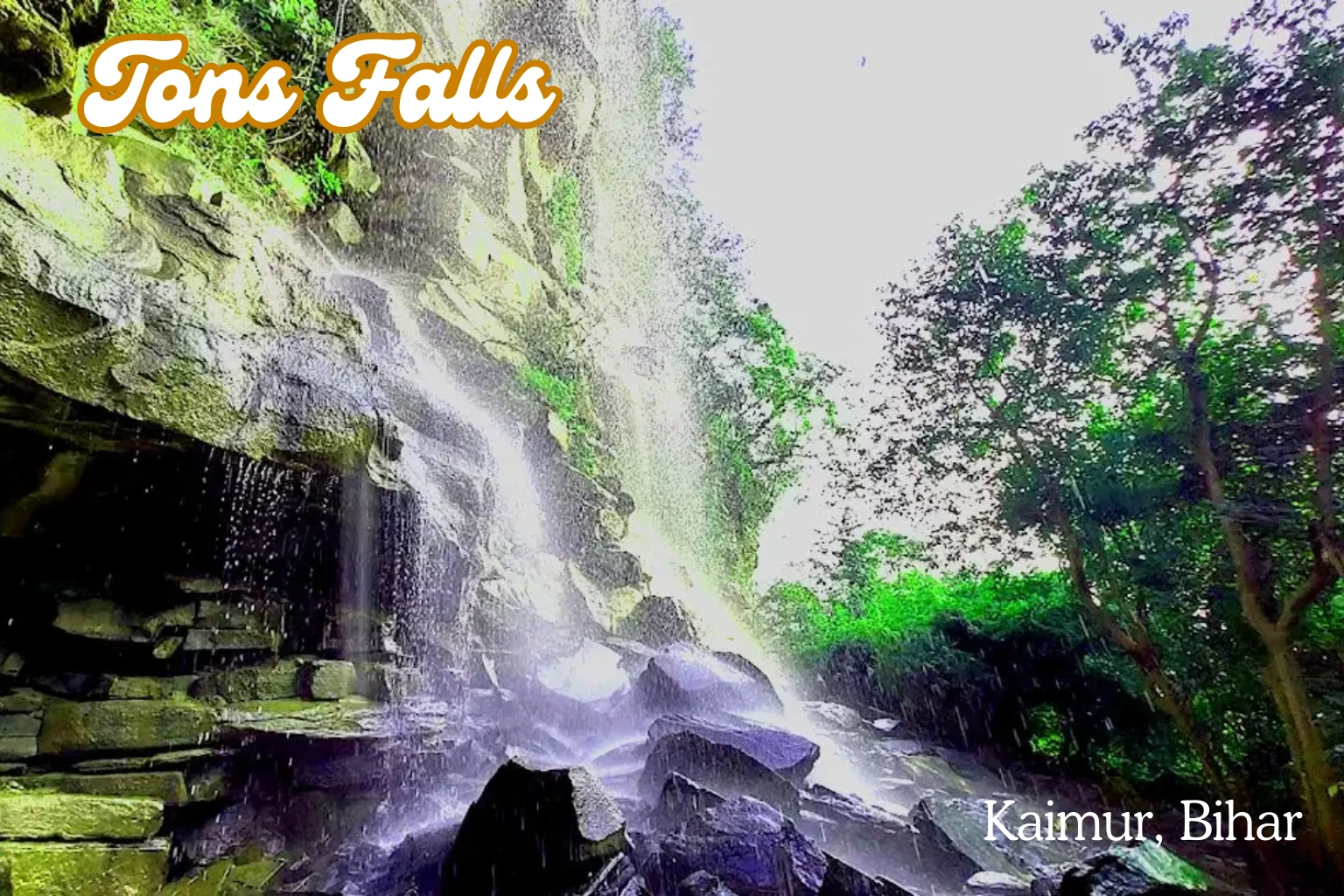| Tons Falls | |
|---|---|
| Waterfall in Kaimur Wildlife Sanctuary, Bihar, India | |
| Location | Kaimur Wildlife Sanctuary, Bihar, India |
| Nearest city | Bhabua and Sasaram |
| Height | Cascades from significant heights during monsoon season |
| Tourist Attraction | Popular for trekking, swimming, birdwatching, and photography |
| Main Wildlife | Surrounded by leopards, deer, peafowl, and more within the sanctuary |
| Bird Species | Over 70 species, including kingfishers, peafowl, and migratory birds |
| Cultural Significance | Nearby ancient rock paintings and megalithic structures |
Nestled within the stunning Kaimur Wildlife Sanctuary in Bihar, Tons Falls is a natural wonder that leaves visitors in awe with its cascading waters and tranquil surroundings. Originating from the Tons River, the waterfall is a must-visit for nature lovers, adventure seekers, and anyone looking for a peaceful escape into the wilderness.
A Spectacle of Nature
Tons Falls is an impressive sight, where water plunges down from towering cliffs into a natural pool below. During the monsoon season, the waterfall reaches its peak, creating a breathtaking display of water, mist, and sound. The area around the falls, covered in lush greenery and rugged cliffs, provides an ideal backdrop for photography and relaxation.
Adventure Awaits
For those who enjoy the outdoors, the region around Tons Falls offers plenty of activities that allow visitors to connect with nature:
- Trekking: Explore the scenic trails that meander through the Kaimur Wildlife Sanctuary. Along the way, you may spot a variety of wildlife, including deer, leopards, and colorful bird species.
- Bird Watching: With over 70 resident bird species, including peafowl, kingfishers, and migratory birds, Tons Falls is a paradise for birdwatchers.
- Swimming and Relaxation: Take a refreshing dip in the natural pool at the base of the waterfall. The cool, clear water provides a relaxing escape from the heat.
- Photography: Capture the stunning interplay of light and water as rainbows often form in the mist, offering endless opportunities for memorable photos.
Cultural and Historical Significance
In addition to its natural beauty, Tons Falls and the surrounding sanctuary are steeped in history. Visitors can explore ancient rock paintings and megalithic structures that tell the story of the region’s cultural and historical heritage. These ancient sites add depth to the experience, allowing travelers to connect with both nature and history.
Accessibility and Best Time to Visit
Tons Falls is easily accessible from nearby towns like Bhabua and Sasaram by road. The best time to visit is between November and February, when the weather is cool and pleasant. During this period, the falls are at their most captivating, and the surrounding landscape is lush and vibrant.
Why Visit Tons Falls?
A visit to Tons Falls is an enriching experience that blends adventure, natural beauty, and cultural exploration. Whether you’re seeking a thrilling trek, a quiet moment in nature, or an educational journey into the past, Tons Falls offers something for everyone. The serene surroundings and the majesty of the waterfall make this an unforgettable destination for tourists of all ages.
Plan your trip to Tons Falls today and discover the enchanting wonders of the Kaimur Wildlife Sanctuary!
Frequently Asked Question
Q. Where is Tons Falls located?
Tons Falls is located within the Kaimur Wildlife Sanctuary in Bihar, near towns like Bhabua and Sasaram.
Q. What activities can I do at Tons Falls?
Visitors can enjoy trekking, birdwatching, swimming, photography, and exploring the historical rock paintings in the area.
Q. When is the best time to visit Tons Falls?
The best time to visit is between November and February, when the weather is cool, and the falls are at their most beautiful.
Q. How can I reach Tons Falls?
Tons Falls is accessible by road from nearby towns like Bhabua and Sasaram, making it an easy day trip for travelers.
Q. What makes Tons Falls unique?
Tons Falls is unique due to its stunning natural beauty, cultural significance with ancient rock paintings, and diverse activities like trekking and birdwatching.





Leave a Reply